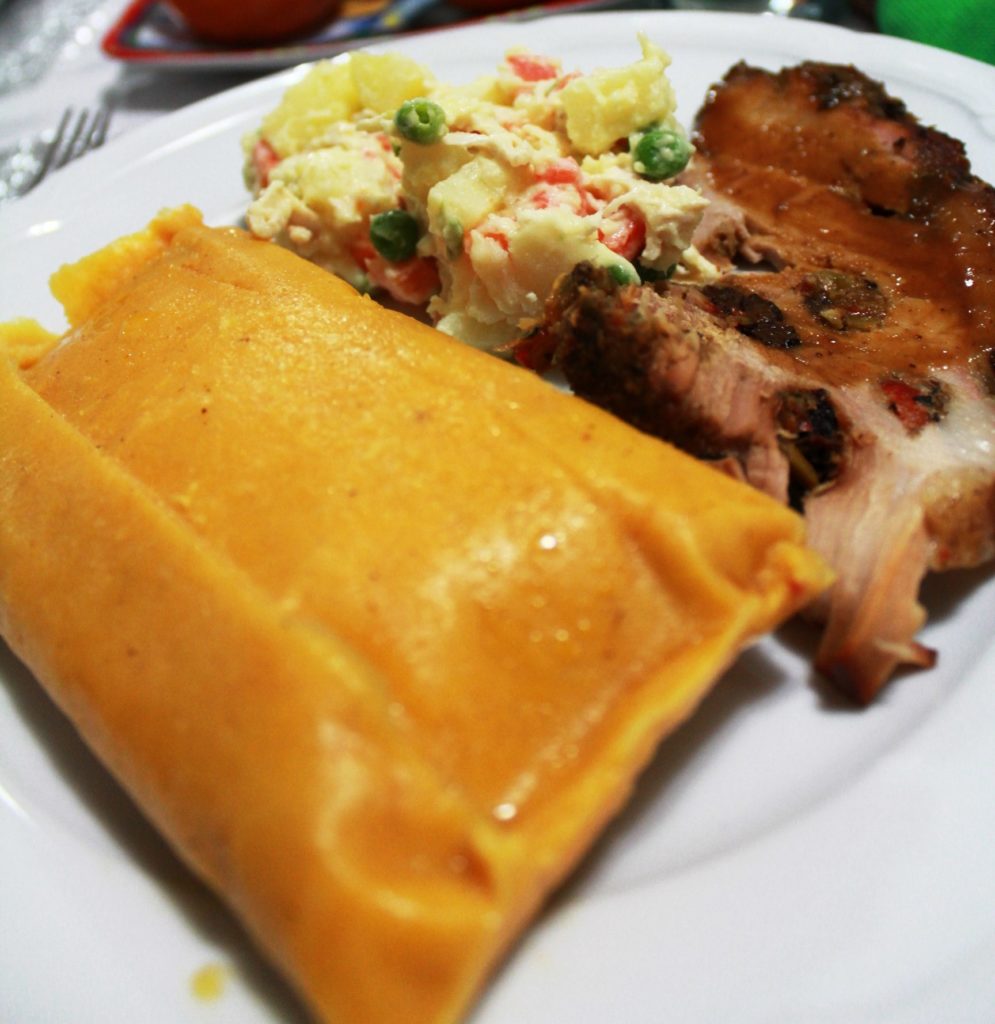Holiday hallacas made with love
A Venezuelan dish passed down for generations.
As soon as Thanksgiving is over and December 1st rolls around, the dining table gets extended and turns into a workspace, while dishes of assorted ingredients line it up. The smell of pork and masa fills the whole house. Chatter rings through the hallways coming from your tias and tios, and your primos get their elbows deep in masa, trying to make as many hallacas as possible so they last several months. This is the moment you know the holiday season has arrived.

Growing up with a Venezuelan mother, hallacas was the staple food for the holidays. From a young age, my mom would sit my sister and I down to help assemble them, and we’d join the rest of my family in the yearly tradition. The spirit of Christmas did not start until the
process of hallacas begun.
To put it simply, the Venezuelan hallaca is similar to tamales, but the ingredients are what differentiate the two. They consist of a pork guiso (filling), el adorno (additions to the filling), la masa, wrapped together with banana leaves.
Generally, we make a mass amount of them and throw them in the freezer so that we conveniently eat them throughout the whole month of December, especially for Christmas Eve dinner.
Part of the process of making hallacas is assembling them with family, we all come together to make the traditional dish. Sometimes we’re lucky enough to have members come from Venezuela to celebrate the holidays, giving us extra sets of hands for the dish.
How to
Below is the recipe for each part of the hallaca:
For the guiso, start by placing the cut up pork in boiling water and save the broth for later. Next, in a large pot, cook onions and garlic in hot oil. Then add the rest of the vegetables. Cook for about 5 minutes, then incorporate meats. Add salt and pepper to taste, and incorporate harina pan (corn meal) and chicken broth. Leave it to cook for about 40 minutes, until it reaches a thick consistency. The remaining parts can be made the following day, including the masa, adorno, and hojas. For the masa, combine all ingredients in a large bowl and mold together with hands. Display assortment of ingredients on table and begin assembling. Wash the banana leaves well and pat them dry. Let your creativity flow as you assemble!
Ingredients:
Guiso (filling):
- 2 lbs of pork loin finely chopped
- 4 lbs of finely chopped beef tenderloin
- 4 lbs of boiled and chopped boneless chicken breast
- 1 lb cooked and finely chopped pork belly
- 3 lbs of finely diced onion
- 1 lb finely cut green onion
- ½ lb finely cut chives
- ¾ cup of peeled and crushed garlic
- ½ cup of small capers
- 2 lbs. of red bell pepper, deseeded, thinly sliced
- 4 lbs of crushed seedless tomato
- 1 cup of raisins
- ¼ cup of sweet pepper finely chopped
- 2 cups of marsala wine
- 1 cup wine vinegar
- 2/3 cup of Harina Pan* (corn meal mix)
- Salt
- Pepper
- Oil with annatto
Adorno (additions to filling):
- 2 lbs bell pepper thinly sliced
- 1 lb of cooked pork belly strips cut ½ cm. x 5 cm
- 1 lb of pork diced ½ cm x 5 cm
- 1 lb of boneless chicken breast cut in strips
- 1 lb of sliced onion
- 200 g capers
- 400 g Spanish olives
- 1 lb of raisins
- Optional: pickled vegetables
Masa:
- 2 ½ packets (3 lbs) of harina pan (corn meal mix)
- 5 cups of pork lard
- 3 cups of chicken broth
- 2 cups of water
- Salt
- Annatto seeds
Hojas (banana leaf wrap):
- 50 banana leaves 30×30 cm
- 50 banana leaves 20×20 cm
- 50 strips of banana leaves 15×20 cm
- 2 rolls of wick




